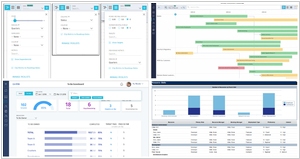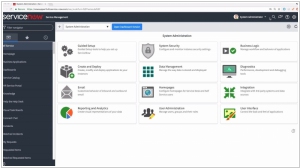Clarity vs ServiceNow
March 12, 2025 | Author: Adam Levine
8★
Speed up your digital transformation with Clarity, the leading investment-planning solution for the enterprise. Instead of traditional project management, we help you transition to digital product management, where you manage value streams to counter market disruptions, maximize enterprise resources, and pivot with fluctuating customer demands.
49★
ServiceNow offers a portfolio of robust cloud-based products that automate and manage IT service relationships across the enterprise. Our products have the advantage of being built on a single cloud platform that consists of one user interface, one code base and one data model, delivering easy, automated upgrades. ServiceNow provides an intuitive and approachable user experience complete with expert services to accelerate time-to-value.
Clarity and ServiceNow, at first glance, appear to be two software platforms engaged in a bitter struggle to make enterprise project management less of a waking nightmare. They both shuffle tasks around, automate things that people used to do slowly and badly and generate reports that executives pretend to read. Both live in the cloud, integrate with other expensive systems and promise to make your business run smoother—assuming, of course, that the people using them don’t immediately break everything by insisting on doing things the old way.
Clarity, a Broadcom creation from the distant past of 1998, is all about making sure money, projects and resources are exactly where they should be—though they probably aren’t. It is an American-born, high-level financial planning powerhouse designed for PMOs and executives who love charts that explain why everything is over budget. It thrives on portfolio management, investment planning and strategic decision-making, while the users quietly wonder whether they should just print everything out and stare at it helplessly.
ServiceNow, meanwhile, arrived in 2004 and decided that IT service management was where the real action was. Also American, it quickly spread into HR, customer service and anything else that involved moving digital requests from one confused person to another. It has a low-code/no-code platform, which is a fancy way of saying people can break things without even needing to be programmers. Instead of focusing on financial forecasting, it’s all about making sure workflows flow, tickets get resolved and nobody has to make a phone call ever again.
See also: Top 10 Project Portfolio Management software
Clarity, a Broadcom creation from the distant past of 1998, is all about making sure money, projects and resources are exactly where they should be—though they probably aren’t. It is an American-born, high-level financial planning powerhouse designed for PMOs and executives who love charts that explain why everything is over budget. It thrives on portfolio management, investment planning and strategic decision-making, while the users quietly wonder whether they should just print everything out and stare at it helplessly.
ServiceNow, meanwhile, arrived in 2004 and decided that IT service management was where the real action was. Also American, it quickly spread into HR, customer service and anything else that involved moving digital requests from one confused person to another. It has a low-code/no-code platform, which is a fancy way of saying people can break things without even needing to be programmers. Instead of focusing on financial forecasting, it’s all about making sure workflows flow, tickets get resolved and nobody has to make a phone call ever again.
See also: Top 10 Project Portfolio Management software




